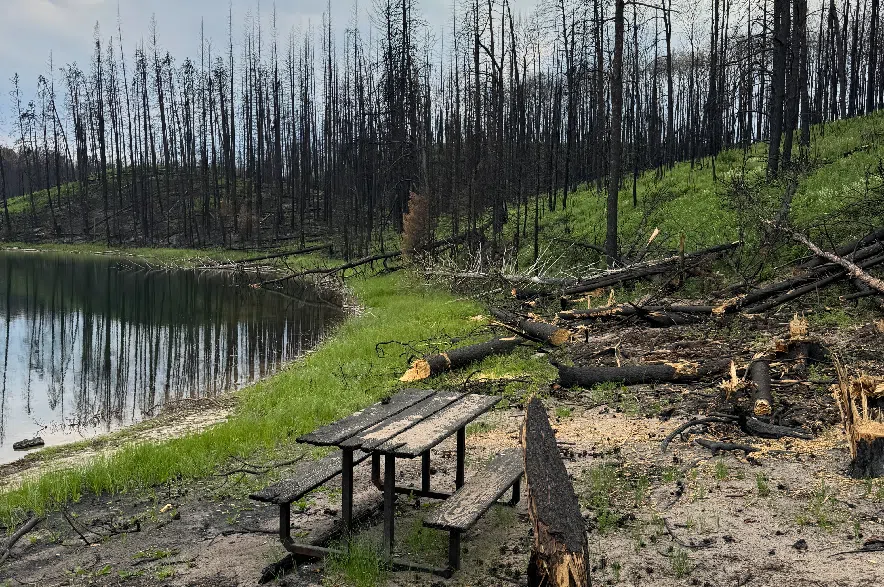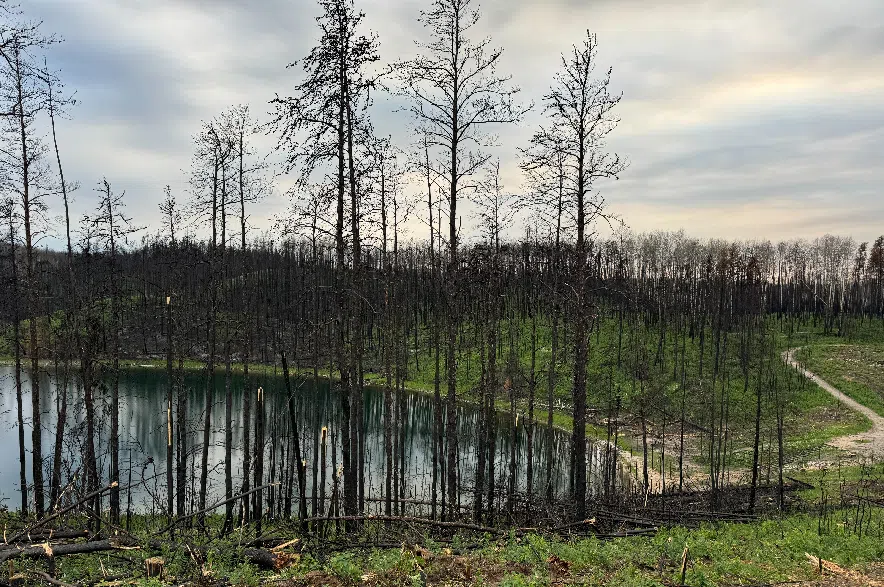After wildfires ripped through large parts of northern Saskatchewan, leaving charred and barren ground in their wake, a tree-planting program is helping to restore the natural landscape of Narrow Hills Provincial Park.
Last month, a group of five people planted 73,080 trees in the provincial park northeast of Prince Albert. The group planted 60,120 jack pines and 12,960 spruce trees, and the provincial government said plants in the area are once again starting to grow and flourish.
Read more:
- Learn the health risks associated with wildfire smoke in Saskatchewan
- $1 million earmarked for new regional park campsites in Saskatchewan
- Brace for soaking rains and stormy skies across Sask. this weekend
“Amid the newly planted trees, various grasses, shrubs, and deciduous trees like trembling aspen, white birch and balsam poplar are beginning to grow,” the Saskatchewan Ministry of Parks, Culture and Sport said in a statement.
The province is also planning an aerial seeding operation, which will see seeds dropped from aircraft over a wide area, as it works to renew the areas affected by the Shoe Fire, which caused significant damage at Narrow Hills and left the park’s campsites closed for the year. The provincial government said its goal is to reopen the campgrounds in the spring.

The province is planning an aerial seeding operation to help restore the areas damaged by wildfires. (Alana Ross/X)
The ministry said its Landscape Protection Unit has been working on forestry renewal projects in the Pine Lake area of the park since 2022, but the Shoe Fire essentially set those efforts back to square one. The trees planted before the fire were too young to produce seeds, meaning they couldn’t regenerate themselves after the fire.
“These trees will help to kickstart the renewal process that Narrow Hills needs following the wildfires that devastated the park,” Alana Ross, Saskatchewan’s minister for parks, culture and sport, said in a statement.
“Creating a safe, natural environment is a step toward reopening the park for future visitors to enjoy.”











